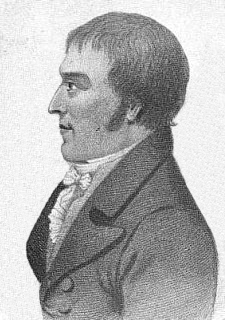A worldwide organisation dedicated to the memory of Paisley poet and weaver-
Robert Tannahill

1774-1810
2010 saw the 200th anniversary of the death of the great Paisley poet Robert Tannahill. Surpassed only by Burns in terms of fame throughout Scotland, Tannahill was born on 3rd June, 1774 at 32 Castle Street, Paisley. He was apprenticed to his father, a master silk weaver at the age of 12. By 1791, as his apprenticeship ended, Tannahill was already showing literary talent, when he and some friends formed the Paisley Literacy and Convivial Association in 1803. He also became first Secretary of the Paisley Burns Club, formed in 1805, which claims to be the oldest formally constituted Burns Club in the world.
From a town that produced no less than two hundred and ninety weaver poets, Robert Tannahill, affectionately known as "Paisley's Son", left a legacy of over a hundred songs and poems. Among these, the popular "Jessie the Flower of Dunblane" and "The Braes of Gleniffer." The famous "Will You Go Lassie Go" (or "Wild Mountain Thyme") is an elegant variant of Tannahill's "The Braes of Balquhidder."
The melody for Australia's "Waltzing Matilda" was taken from Tannahill's song "The Bonnie Woods Of Craigielea", of which the music was composed by Robert Barr.
Another composer, Robert Archibald Smith, who was also a weaver - moved from Reading to work in Paisley and became a great friend of Tannahill. Smith wrote the music for many of his songs and also Robert Burns' "My Love is like a Red, Red Rose", after several unsuccessful attempts were made by others.
In 1807, Tannahill self published a 175-page volume of his poetry by advance subscription, selling all 900 copies within two weeks. This made him a profit of £20.
However, Tannahill thought seeking subscribers was somehow degrading. For the proposed second edition, he sought to approach publishers directly. Unfortunately publishers in Greenock and Edinburgh turned him down.
Tannahill, who was prone to bouts of depression, took this badly and there were signs of deep emotional distress.
On the morning of 17th May, 1810, Tannahill was found drowned in a culvert at the Candren Burn in Paisley's west end - only yards from his family home at 11 Queen Street. The cottage, built in 1775, still stands today.
Fondly remembered after his death, locals funded a monument in 1866, which was erected by his grave at Castlehead Church a year later.
On the centenary of Tannahill's birth in 1874, and until 1935, crowds of up to 30,000 each year would would pay a penny each to attend the "Glen Concerts." These were held in the summer, on the Gleniffer Braes above Paisley, on each occasion featuring a choir consisting of five hundred to seven hundred members performing his songs.
The proceeds raised from the first eight of these concerts built Tannahill's statue, erected in 1883. This can be found at Paisley Abbey Close, opposite the Town Hall.
In the years that followed, proceeds were donated to Paisley's Royal Infirmary.
Article © David Mullen 2010
© All Rights Reserved © materials should NOT be used without written permission, to be retained by user.
The Robert Tannahill Federation will admit individuals without regard to their race, religion, colour, sex, age, handicap, sexual orientation or national origin to all the rights, privileges, and other activities generally accorded or made available to members of the organisation.
For enquiries or details on how to apply for membership, please send an email using this link:
info@roberttannahillfederation.com